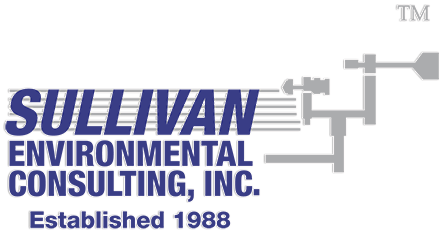- info@sullivan-environmental.com
- 1900 Elkin Street, Suite 200, Alexandria VA 22308
- (703) 780-4580
When there is a need to estimate human exposures to air pollutants there are generally two options available to analysts: directly measure the air quality or rely on computerized dispersion models to estimate air quality based on the input of source(s) emission rates, meteorological data, and other factors. Which option is the best choice? Well, that depends. Each has its benefits, but of course, the option remains to rely on both.
Assuming that there is a validated protocol and experienced staff to reliably measure air quality, measured data provides the most direct data. Why would air quality models be needed to estimate air quality if direct measurement is a viable option? That is a good question, but there are multiple reasons why air quality modeling remains a sound option.
First, air quality monitoring can provide direct and reliable concentrations at specific locations and for specific times, e.g., for an hour or day at a specific location (monitoring site). What about locations where there are not any monitors? What about time periods when monitoring is not being done? If there are concerns about airborne exposures within a neighborhood, for example, from a nearby industrial facility or another source, it is infeasible to have enough monitoring points and directly cover enough time periods to evaluate exposures at this scale. Air quality modeling, on the other hand, could provide estimates of air quality throughout the neighborhood (and beyond) on an hour-by-hour basis for multiple years.
Second, there are many times when a source of air pollution is no longer in operation similar to past operational periods of interest, or the facility(s) in question have shut down. Air quality modeling then is not even an option. Air quality modeling would be the method of choice based on estimates of emission rates at the time of concern.
Does this result in air quality modeling being the preferred option? For the second case listed above, the answer is yes, but if the facility(s) of concern are still operational, the ideal approach is to rely on both measured and modeled air quality. This approach to rely on integrated air quality/monitoring initiatives was an important component of a former EPA program called the Integrated Environmental Management Project (IEMP). David Sullivan and Dennis Hlinka of Sullivan Environmental serve as Principal Investigator and lead modeler, respectively, on these studies. Air quality monitoring results were used as points of reference to confirm model options and emission treatments and then modeling was used to evaluate exposures sometimes to hundreds of air pollutants. More details on the IEMP are contained in the blog “Urban-Scale Air Quality Assessment.” Integrated air quality monitoring and modeling also apply at the facility and neighborhood level when measured data are available as a point of reference. Similar to the IEMP, we use the measured data as a checkpoint in the modeling with the goal of ensuring the model selection, model options, emission inputs, etc. are producing modeling results that are reasonably consistent with measured observations. When measured air quality data are not available and the facility is still operational, we can collect representative measured air quality data, dust fall measurements when applicable to the airborne deposition pathway, and odor samples to compare with odor threshold levels. The use of the measured data is not to calibrate the model, i.e., to force it to mathematically match the measurements, but to “learn” from the measured data the most accurate way to model the observed concentrations.
Sullivan Environmental has extensive air quality monitoring equipment to support our air quality programs, including the following:
- 40 solar-powered, self-contained air quality sampling systems that can address a wide array of air pollutants based on validated methods.
- 15 sonic anemometers to support multiple meteorological sampling profiles to complement air quality monitoring and support data interpretation.
- 2, 3-dimensional sonic anemometers to provide heat flux data, and three-dimensional turbulence data to further support air quality modeling initiatives.
- 3 Odor sampling systems to support the collection of odor samples for presentation to odor laboratory panels.
- 2 soil monitoring systems to measure soil temperature and soil moisture at multiple sampling depths.
- 5 noise monitors and one field calibrator are maintained in NIST calibration.
The above equipment can be used to support the modeling of exposures as well as for computing emission rates from fugitive emissions, which cannot be practically evaluated except on a composite basis, such as airborne exposures for pesticide applications, complex piping system leaks at large industrial facilities, and so forth.
